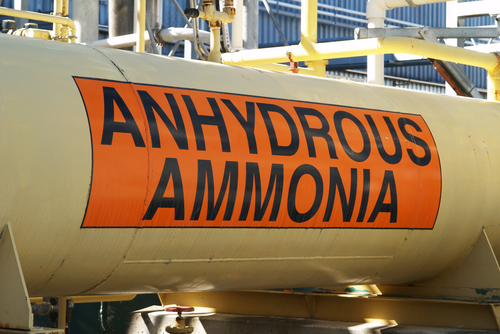 |
Haphazard use and storage of anhydrous ammonia has been the cause of many catastrophic releases and explosions worldwide for decades. Ammonia is corrosive to skin, lungs and eyes, flammable at certain concentrations in the air and may explode if exposed to a source of ignition or if an ammonia-containing vessel is exposed to a fire. In the United States, anhydrous ammonia is commonly used in fertilizers and other agricultural applications and in refrigeration.
In recent years, however, the EPA has made enforcement of anhydrous ammonia facilities a priority. In the case of four Massachusetts-based companies with the same owner, the EPA was on site when an accidental release occurred, resulting in substantial fines and other penalties for multiple violations.
The companies operate four refrigerated warehouses that store primarily seafood and cranberries, and use anhydrous ammonia as the refrigerant. The facilities are located less than two miles from downtown Middleborough, Massachusetts, and in proximity to two elementary schools, a supermarket, train tracks, and less than a third of a mile from Interstate 495. In February 2012, the EPA was inspecting the facilities when an accidental release of anhydrous ammonia occurred, causing the EPA inspectors to stop the inspection, evacuate the area and contact emergency response authorities.
Forget expensive calls to lawyers and consultants. With Enviro.BLR.com, you get instant access, 24/7. Try it out today and get the 2014 EHS Salary Guide, absolutely free. Download Now.
As a result, the companies’ owner was charged in four separate complaints with violating the CAA’s General Duty Clause that requires facilities with ammonia system capacities of less than 10,000 pounds to identify hazards, prevent chemical releases and minimize the effects of releases that do occur. In each complaint the four facilities were found to have violated all three of these specified duties.
In addition, three of the four facilities also failed to submit emergency and hazardous chemical inventory forms as required by EPCRA for both the anhydrous ammonia in each system and for sulfuric acid in forklift batteries.
The inspectors found an extensive list of safety violations including:
- A lack of critical documents and information about the refrigeration systems (needed by operators, inspectors, and emergency responders to understand the functioning, capacity, and risks posed by the systems),
- A lack of adequate ventilation systems,
- A lack of signs and labels on equipment and piping, and posted information about the systems’ operation and shutdown processes,
- Failure to keep the ammonia machinery rooms free of flammable material, increasing fire or explosion risk,
- Failure to protect ammonia equipment and piping from forklift impacts,
- Failure to have emergency eyewash and shower stations,
- Failure to protect piping or support systems from corrosion, increasing the risk of a release,
- Failure to properly place ammonia relief valves discharges and pressure-relief vent pipes, increasing the risk that emergency responders and workers could be sprayed with ammonia during a release,
- Failure to have emergency shutdown switches outside machinery room doors, impeding a quick and safe response to any release,
- Failure to have adequate ammonia detectors or alarms, and
- Failure to develop adequate emergency response plans.
Everything You Need for Environmental Compliance
Enviro.BLR.com puts everything you need at your fingertips, including practical RCRA, CAA, CWA, hazardous waste regulatory analysis and activity, news, and compliance tools. Try it at no cost or risk and get a FREE report.
The owner of the four companies was assessed $108,000 in fines and will spend an additional $345,000 to complete safety upgrades at the facilities and to provide local and regional emergency responders with equipment. The upgrades include installing a computerized control and monitoring system at one of the facilities that will provide early release detection to aid prevention and minimize release impacts of a release by facilitating a quick response.
